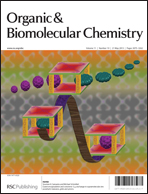Synthesis of the IGF-II-like hormone vesiculin using regioselective formation of disulfide bonds
Abstract
Diabetes mellitus, characterised by hyperglycemia and altered β-cell function, is an increasingly common disorder affecting millions of individuals world-wide. While therapeutic regimens exist to manage the condition, diabetic individuals remain prone to complications that are detrimental to both their length and quality of life. An improved understanding of the disease which may then enable development of new treatments is therefore a desirable goal. Vesiculin, a novel IGF-II-like


 Please wait while we load your content...
Please wait while we load your content...